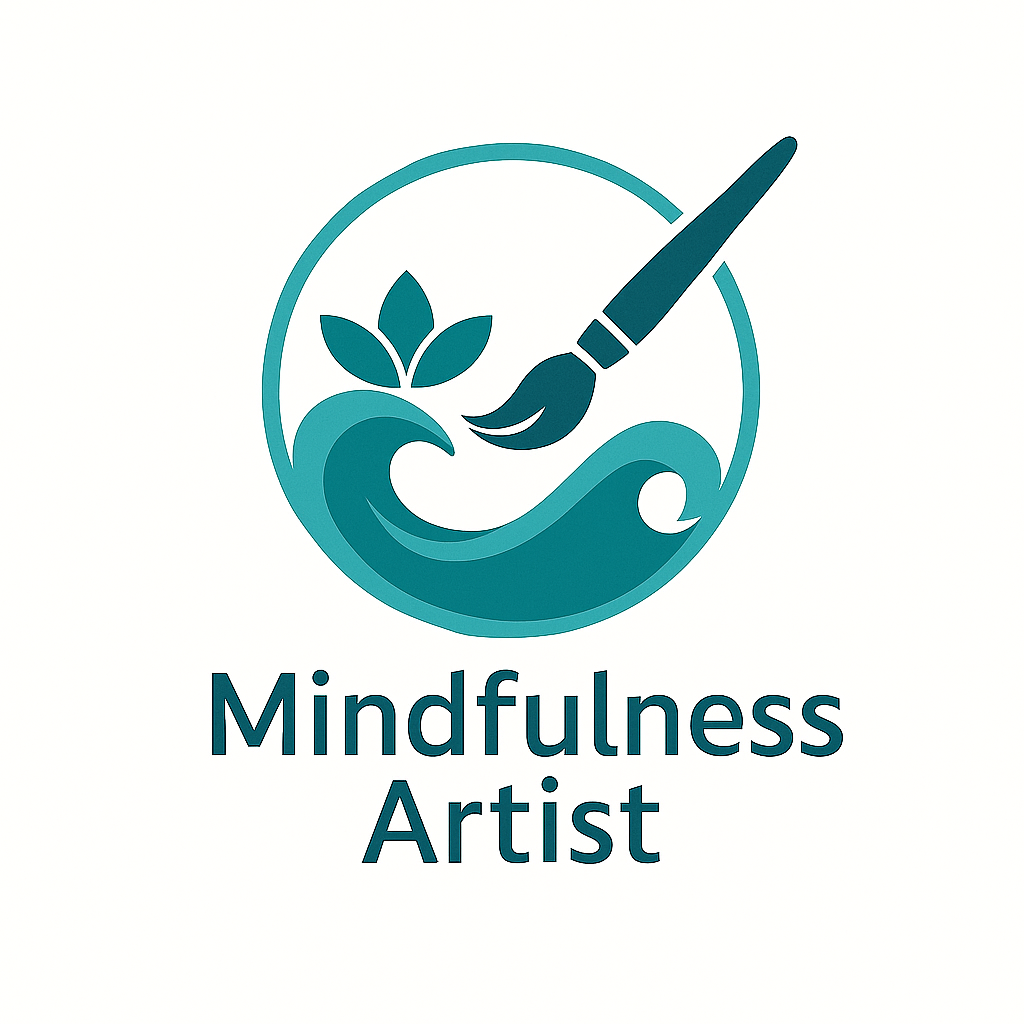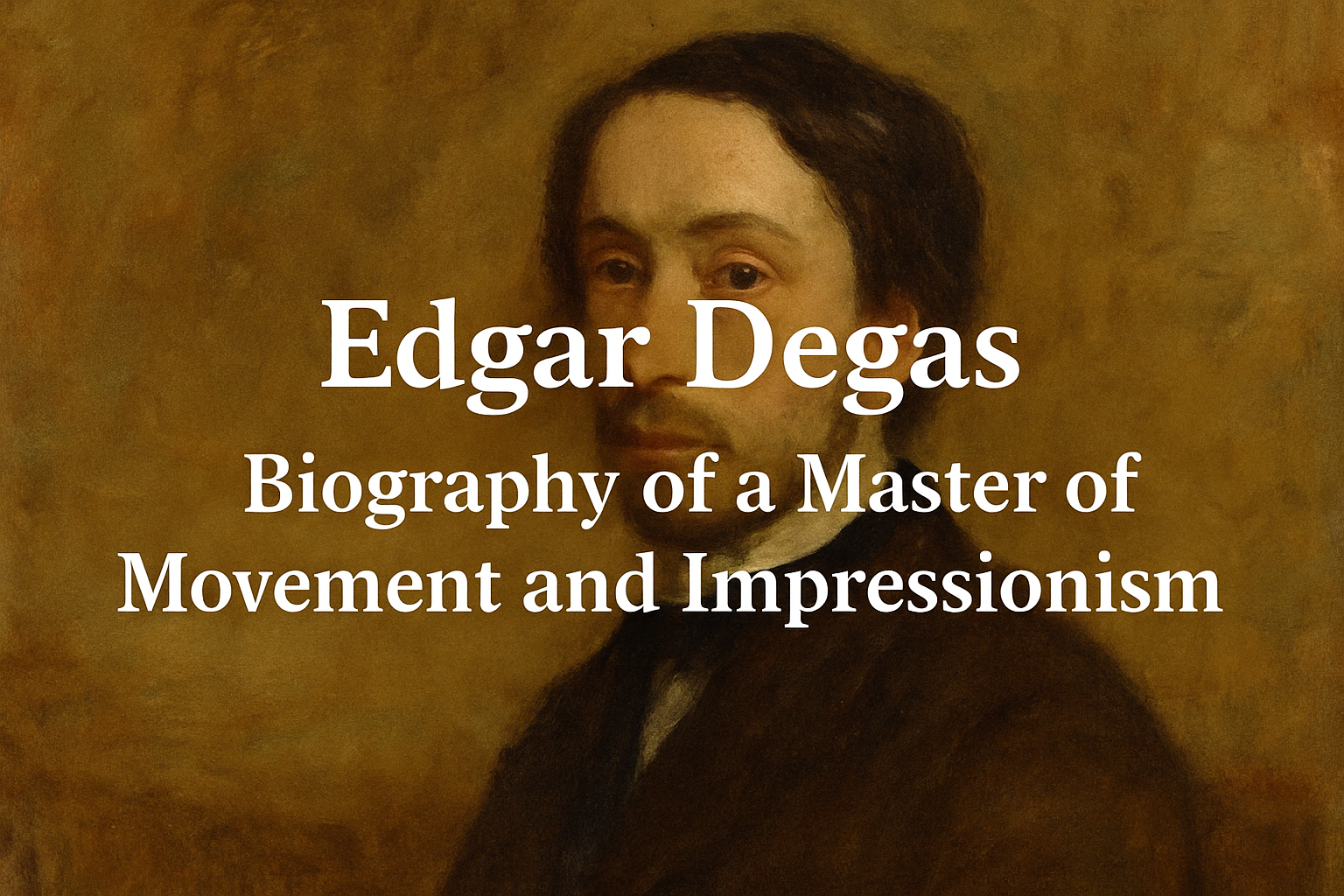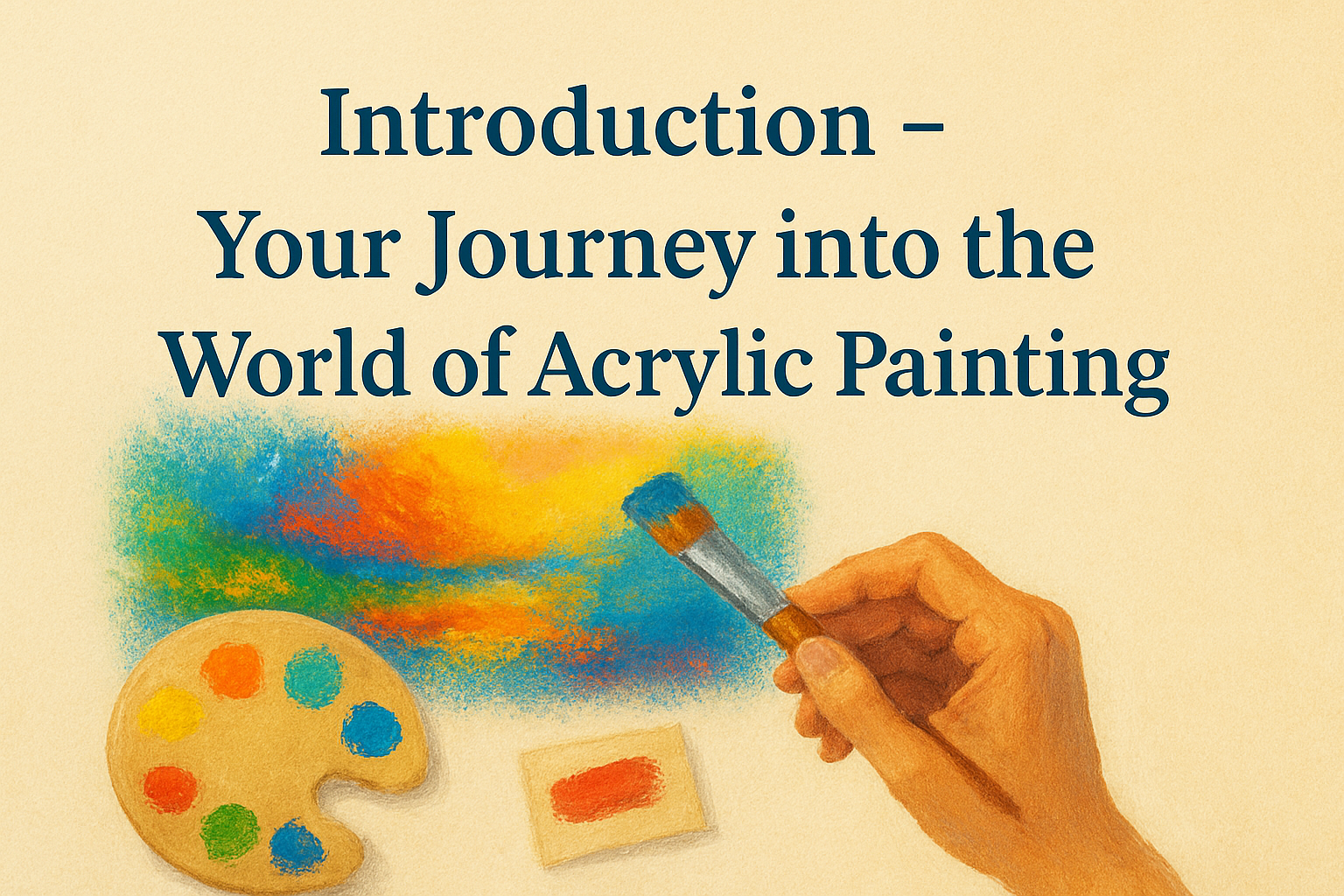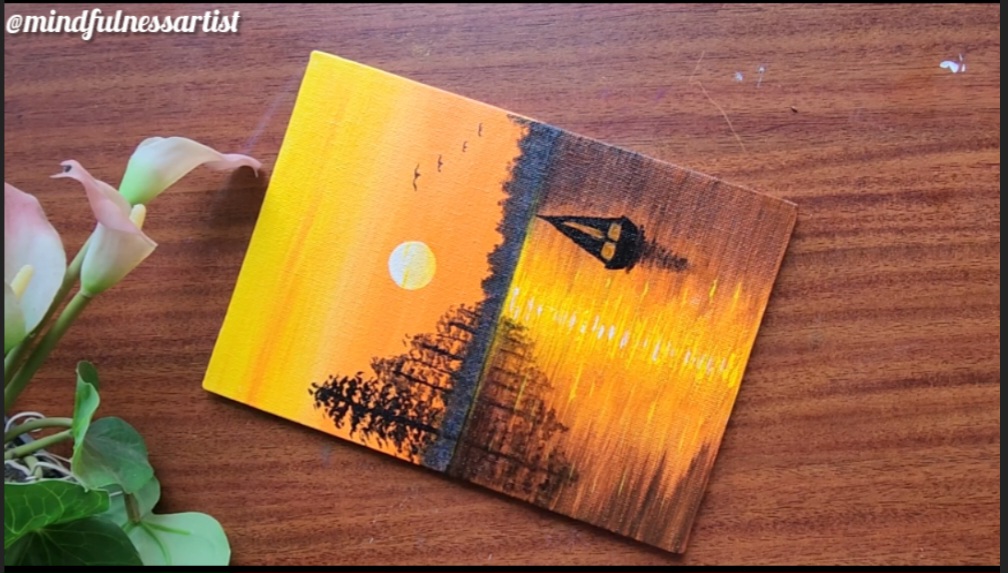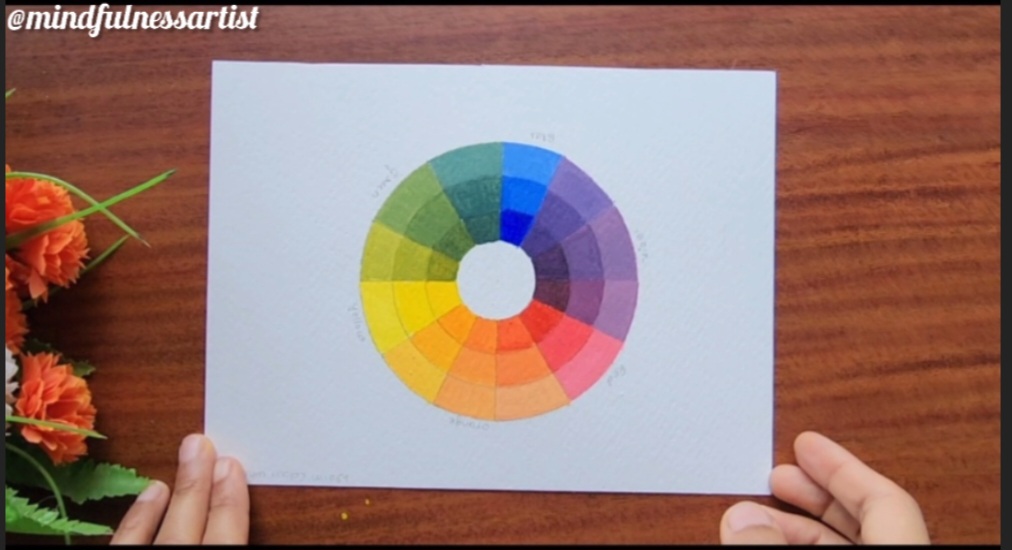
Color Theory Made Simple — A Step-by-Step Color Wheel (Primary → Secondary → Tertiary)
From Primary to Perfection — One Wheel at a Time
Color is the heartbeat of painting. In this simple step-by-step guide you’ll paint a 12-segment color wheel and learn how primaries mix into secondaries and tertiaries — plus how to make three value steps for each hue so your palette feels organized and ready to use.
- Acrylic paints (yellow, red, blue)
- A round palette or mixing area
- Water cup + paper towel
- Small round brush (for filling)
- Pencil, compass or round objects to trace 3 concentric circles
- Acrylic paper / small canvas
- Optional: palette knife for mixing
Step-by-Step: Paint your Color Wheel
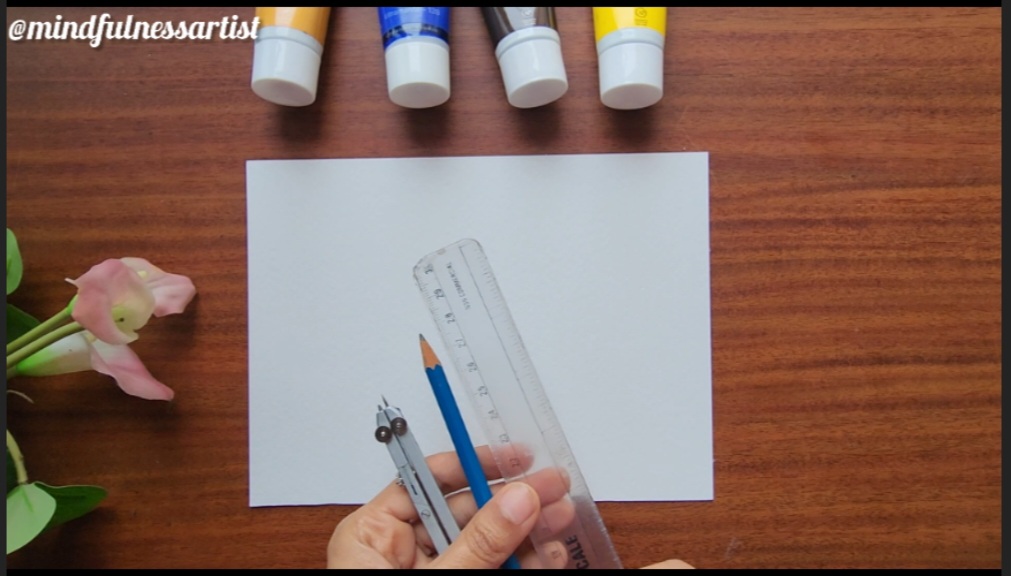
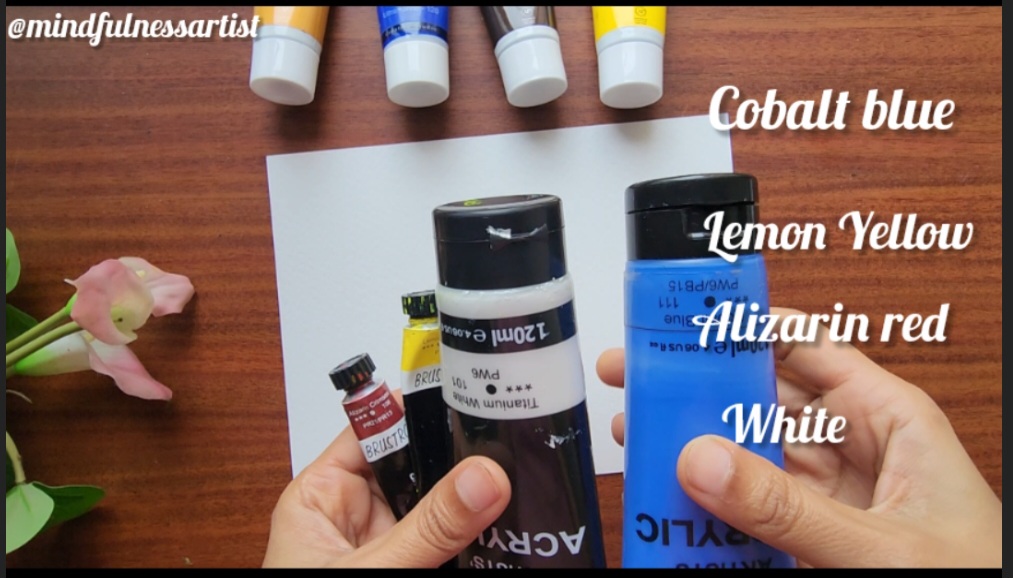
Draw the wheel
Lightly draw 3 concentric circles on your paper (center, middle ring, outer ring). Divide the circle into 12 equal wedges (30° each). Mark positions for Red, Yellow, Blue spaced like a triangle — these are your primary points.
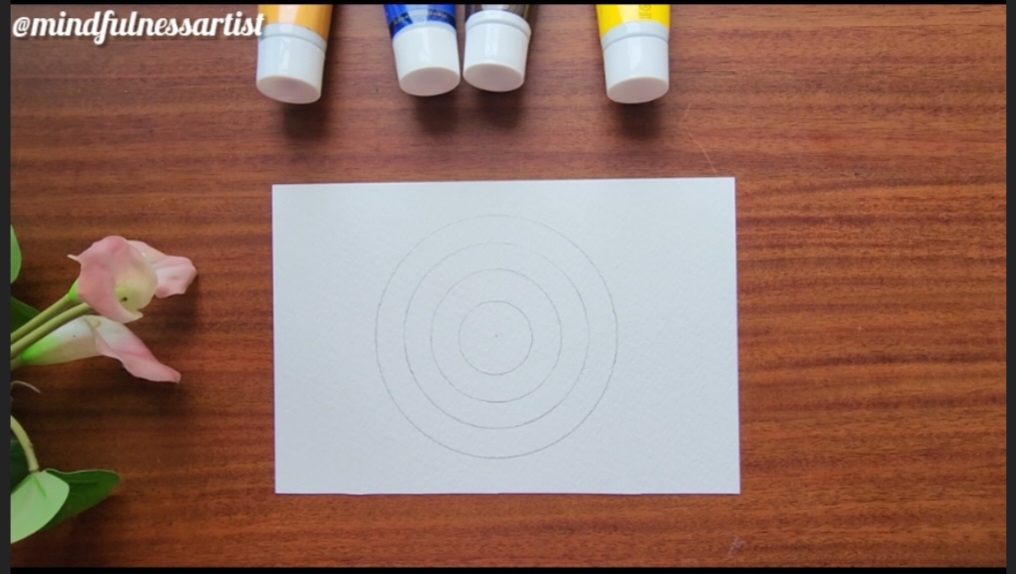
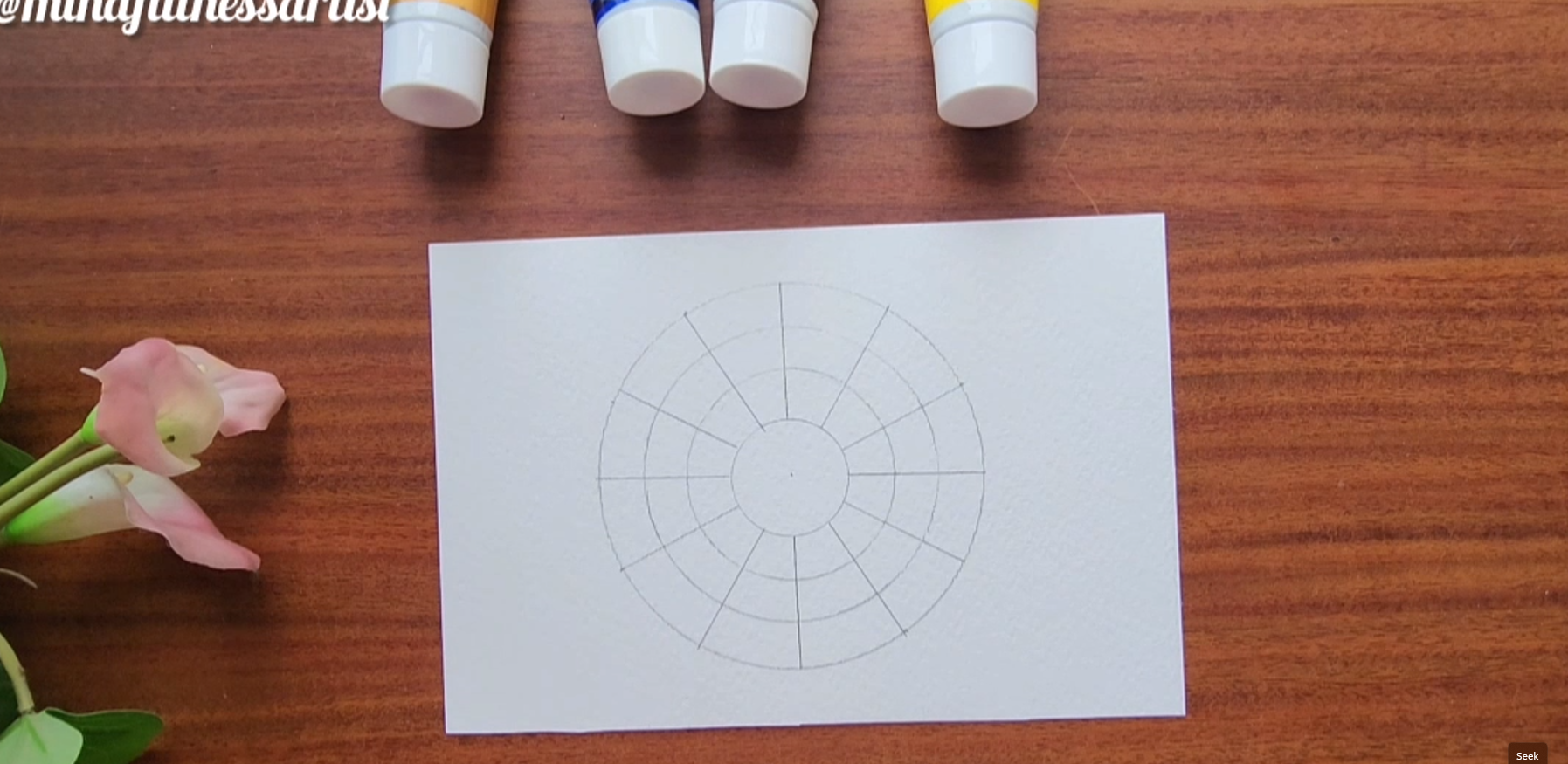
Paint the primaries : Inner ring Paint hues Yellow, Red, Blue. .
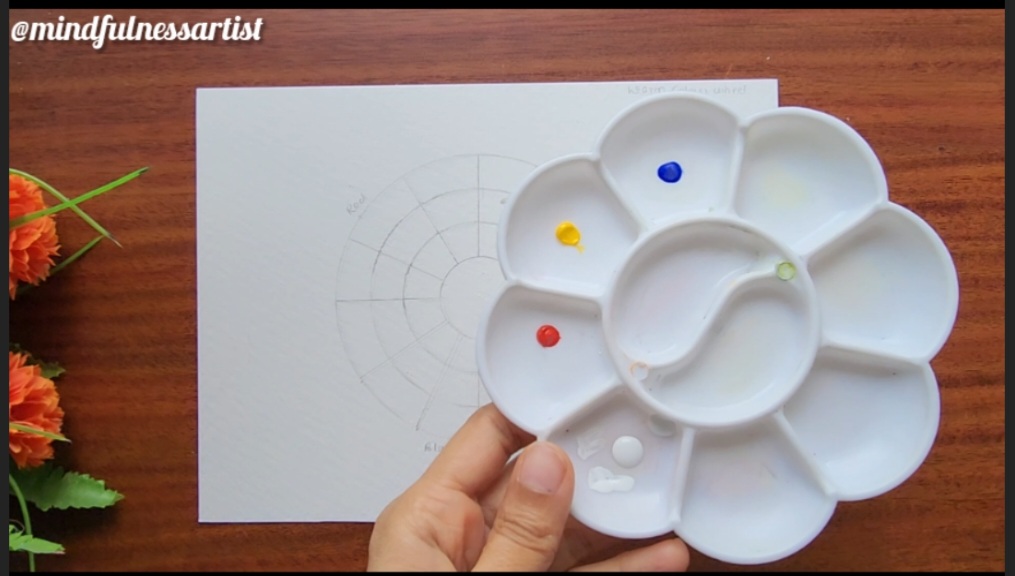
Create the value gradation
- For each wedge, you’ll paint three small radial blocks (inner → outer). The inner block = pure hue (saturated), the middle block = a little white added (tint), the outer block = more white (lighter tint). This gives you three values for each hue and helps you see how the color behaves in light and dark.
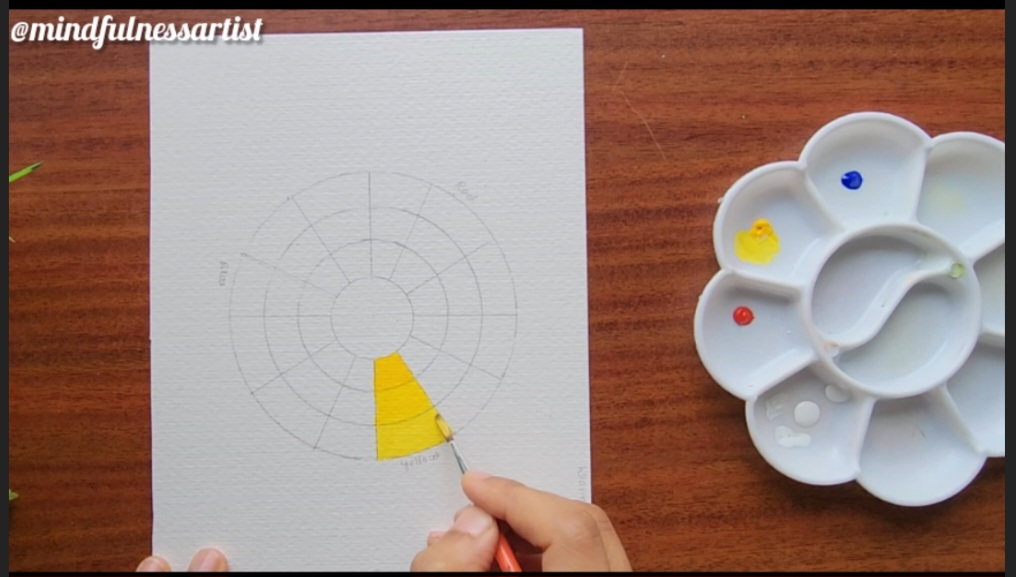
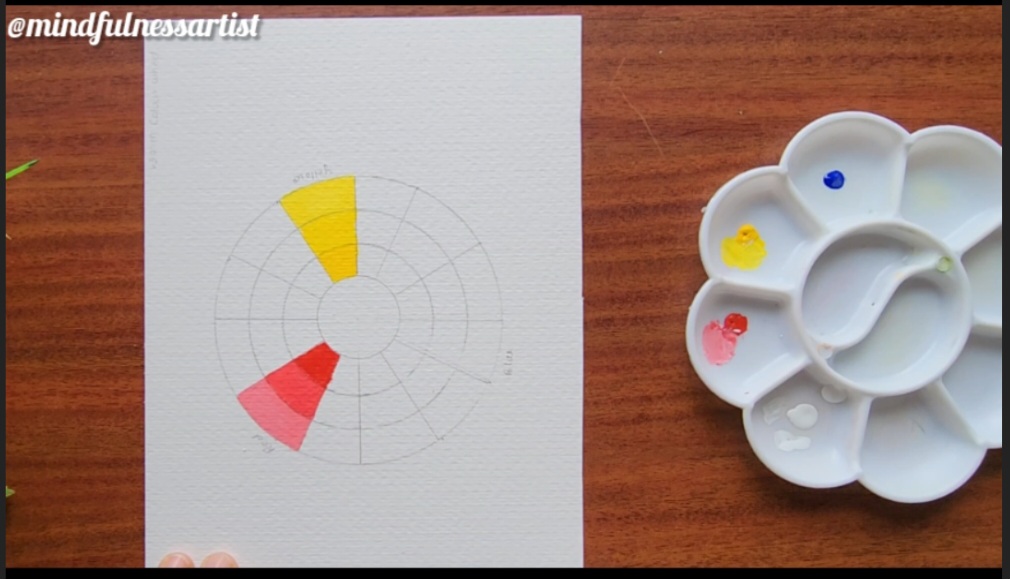
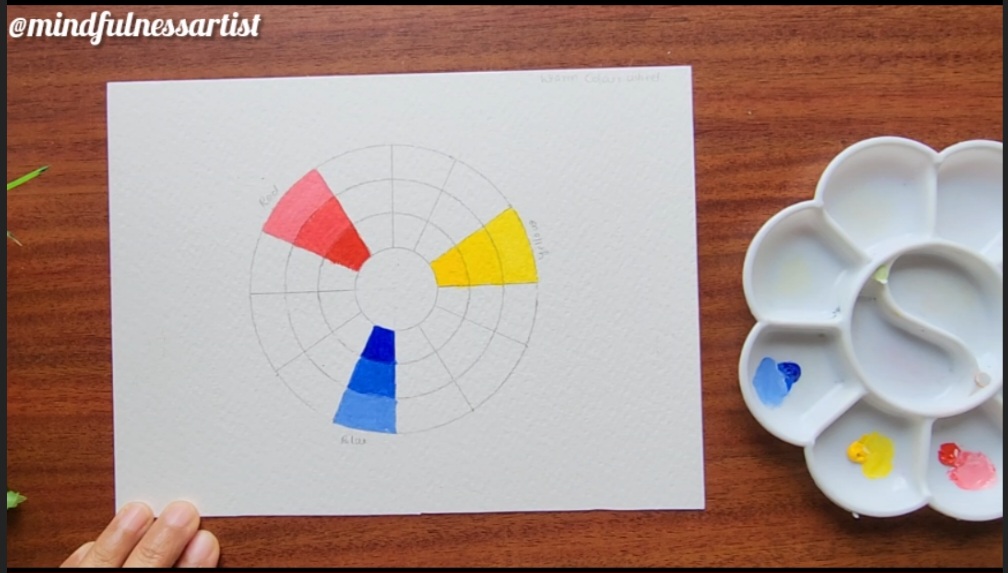
Mix secondaries
- Secondaries are formed by mixing two primaries:
- Red + Yellow → Orange
- Yellow + Blue → Green
- Blue + Red → Violet (Purple)
- Mix equal parts first, then adjust to warm/cool as you prefer. Paint the corresponding three value blocks for each secondary wedge (inner = pure mixture, then 2 lighter tints).
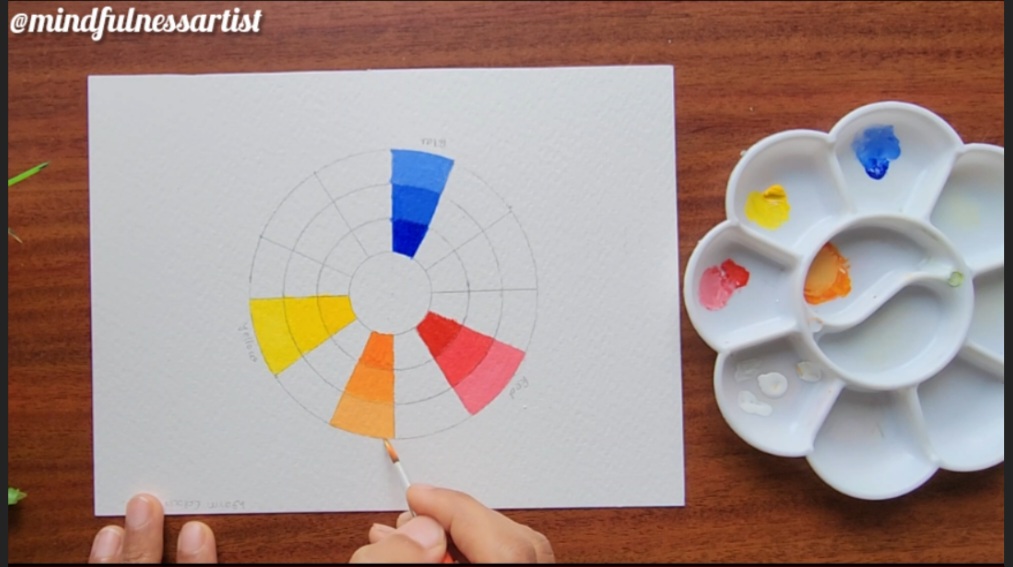
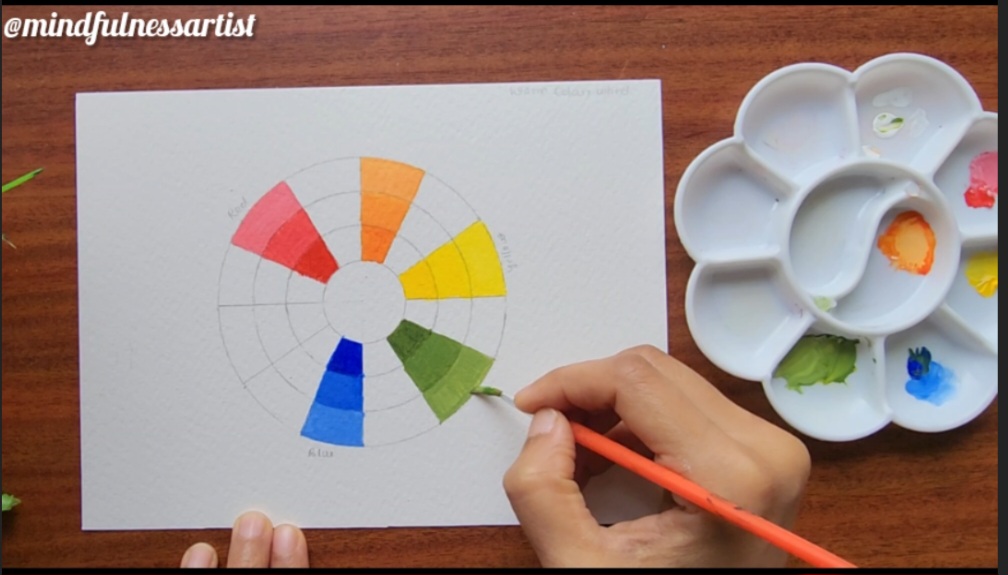
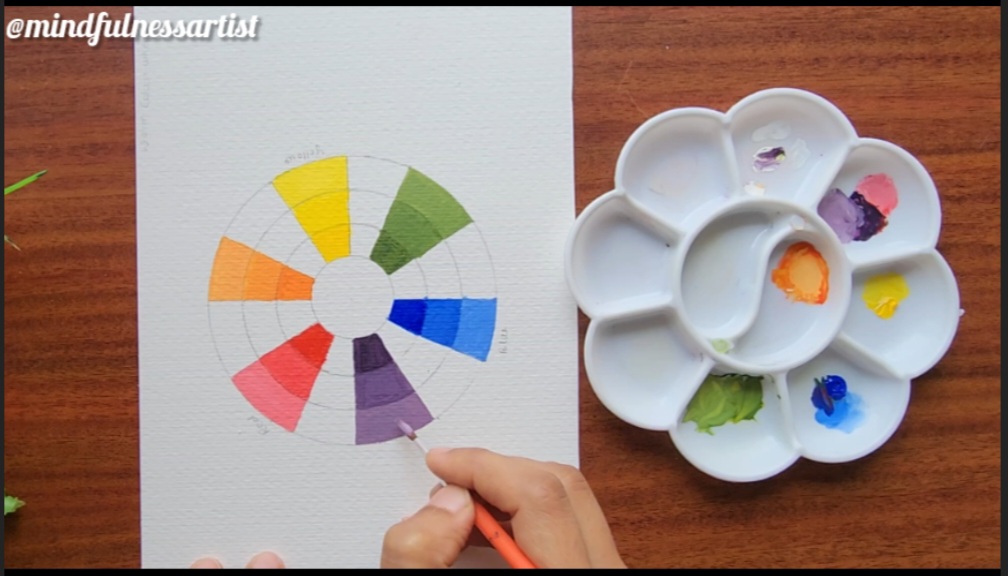
Mix tertiaries
- Between each primary and secondary are tertiary hues (e.g., Yellow-Orange, Red-Orange, Red-Violet, Blue-Violet, Blue-Green, Yellow-Green). Make these by blending the adjacent colors (for Yellow-Orange mix Yellow with a little Orange). Paint their three value blocks too.
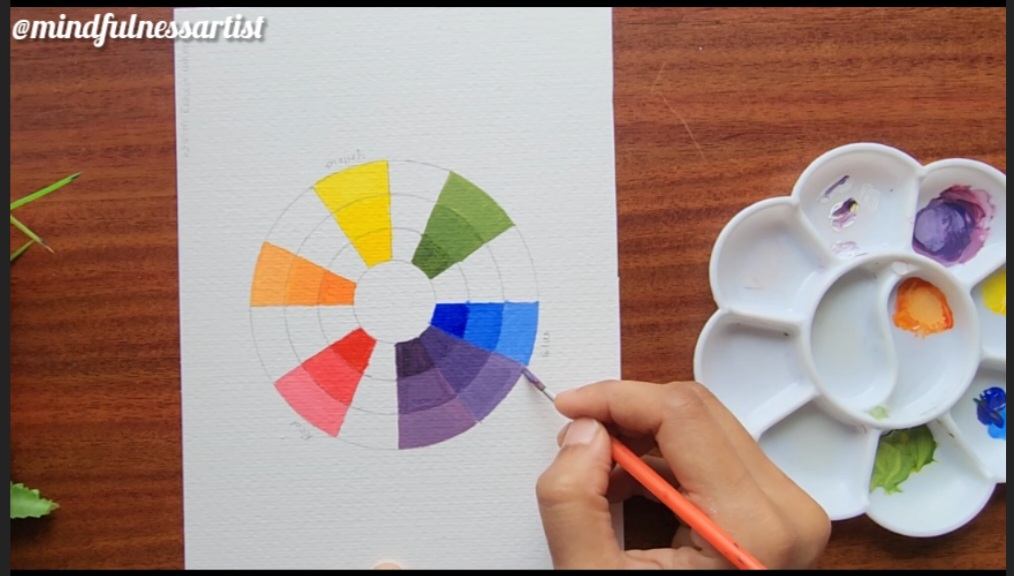
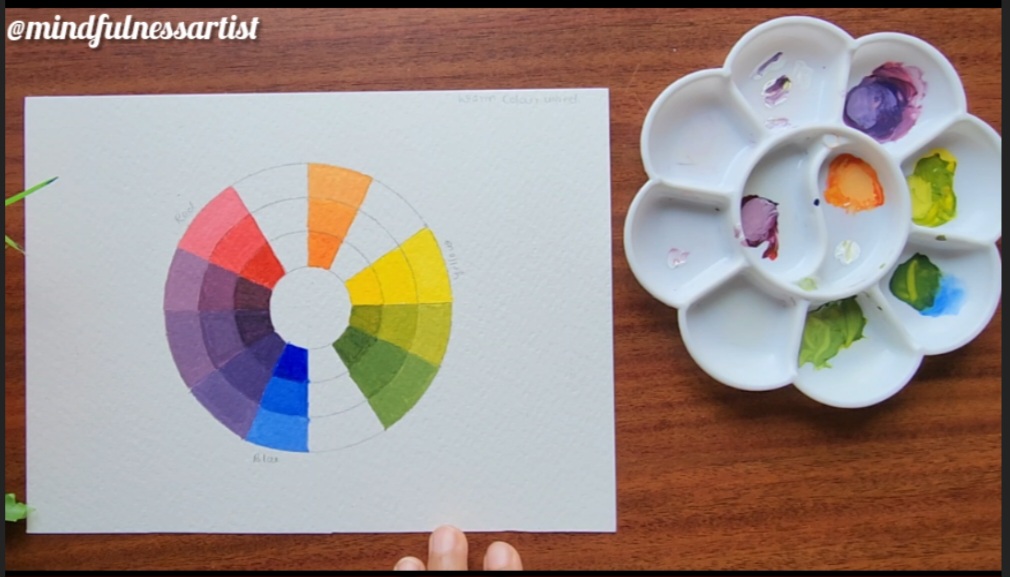
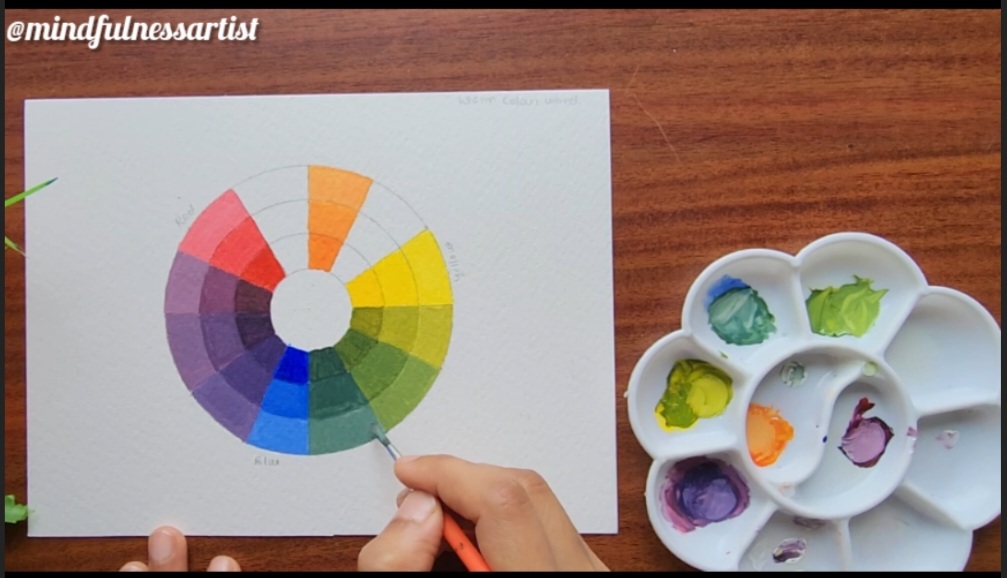
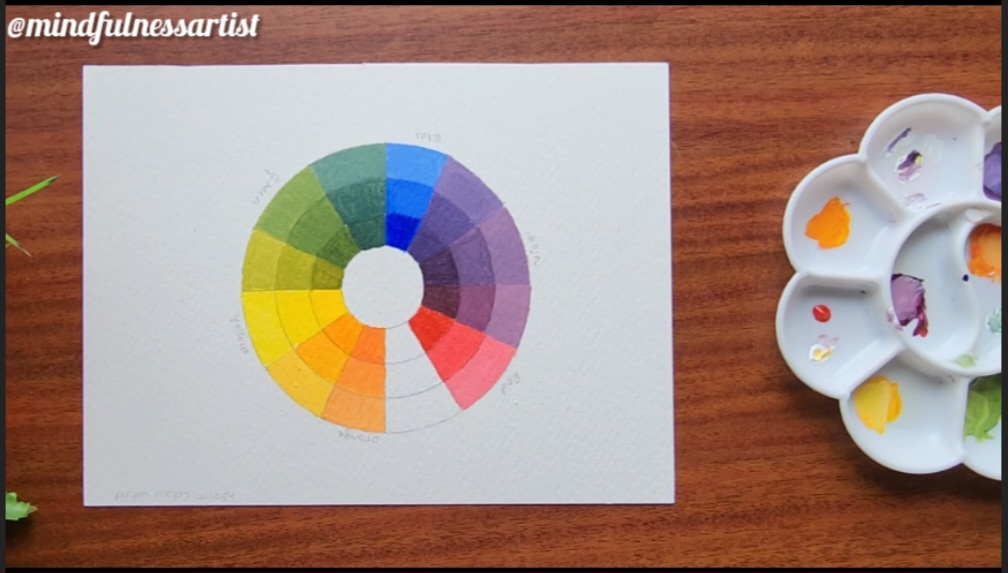
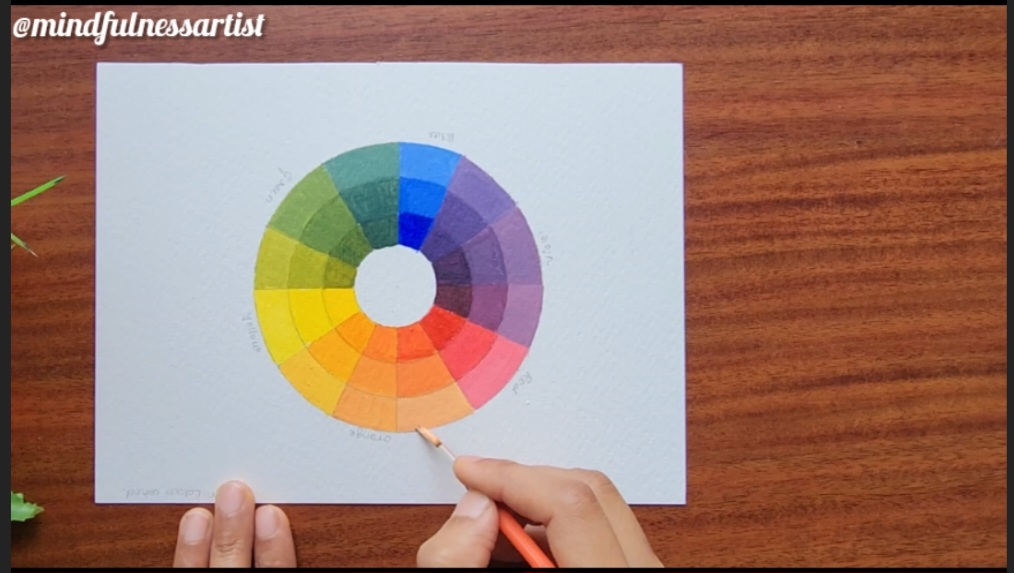
Fill and refine
- Work around the wheel wedge by wedge. Clean your brush between mixes to avoid muddying colors. If a color looks too dull, add a touch of the original pure pigment; if too bright, add the complementary color sparingly to tone it down.
Understanding Primary, Secondary & Tertiary
- Primary colors: Red, Yellow, Blue — pigments that cannot be mixed from other colors
- Secondary colors: Orange, Green, Violet — made by mixing two primaries.
- Tertiary colors: The mixes between a primary and an adjacent secondary (e.g., Red-Orange). They bridge the wheel and create natural tonal transitions.
Quick Mixing Tips
- Start with small amounts on your palette — you can always add more.
- Use a clean brush or palette knife for accurate mixes.
- If colors get muddy, clean paint off and remix fresh — muddy usually means too many different pigments combined.
- Use warm and cool versions of the same color family to create richer mixes (e.g., Cadmium Yellow vs. Lemon Yellow).
